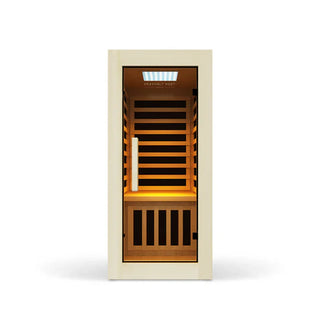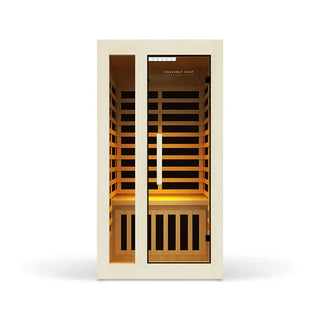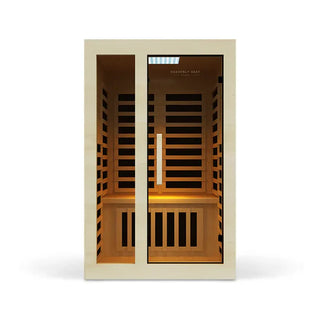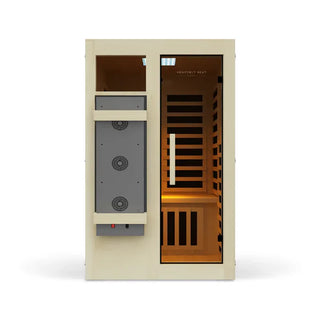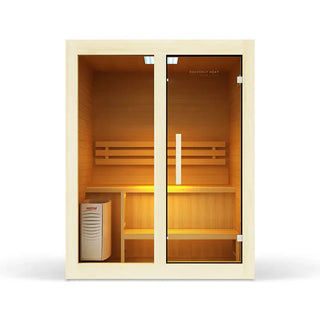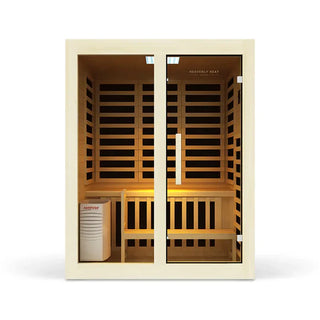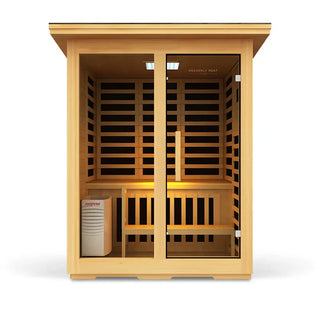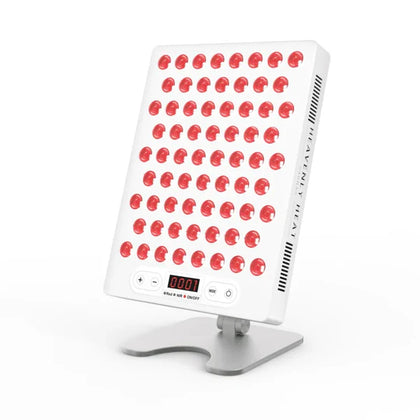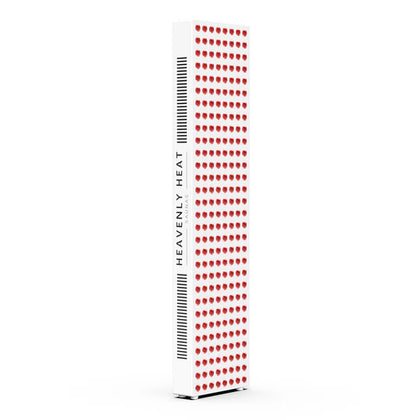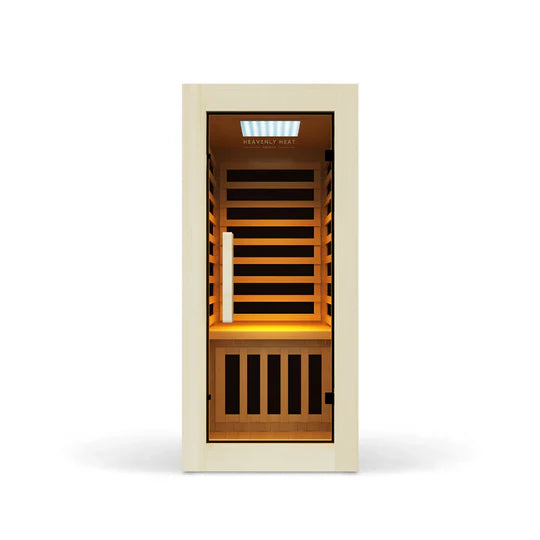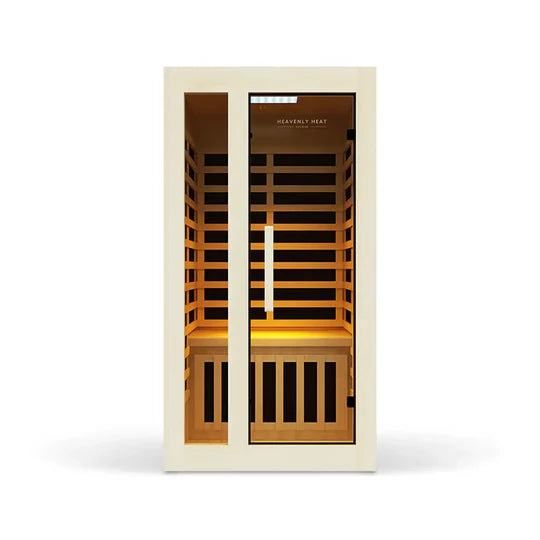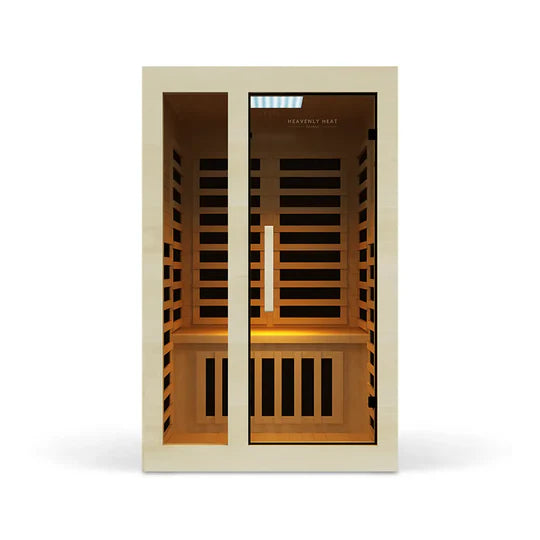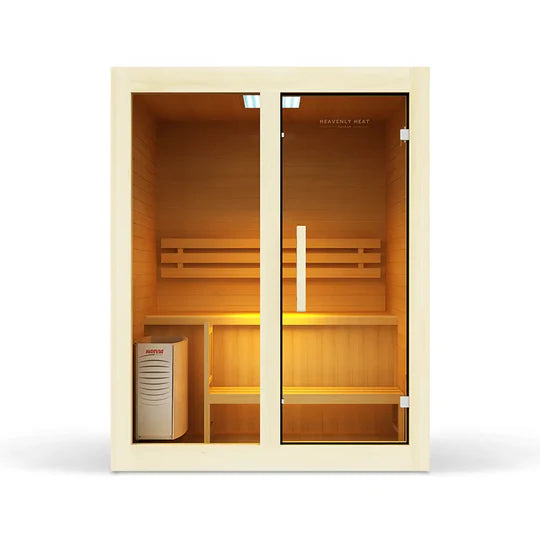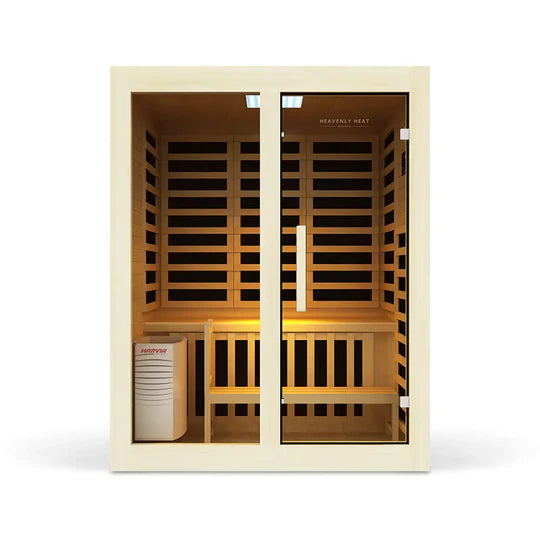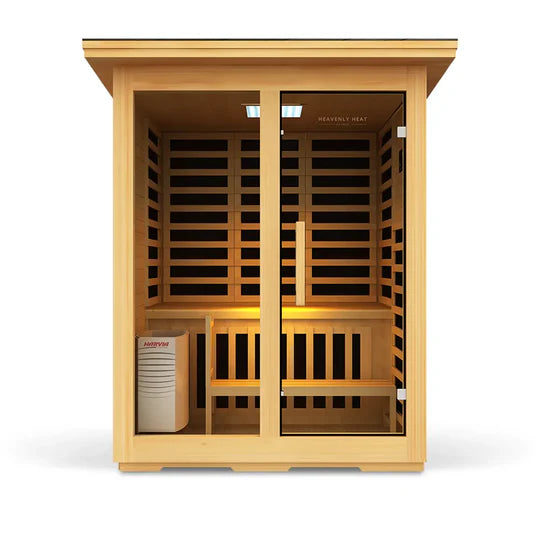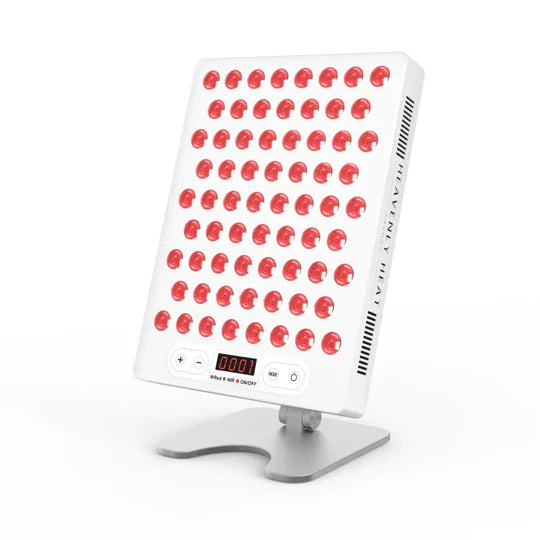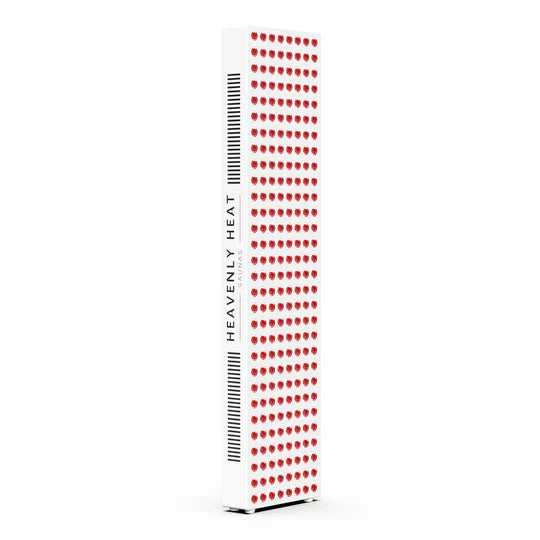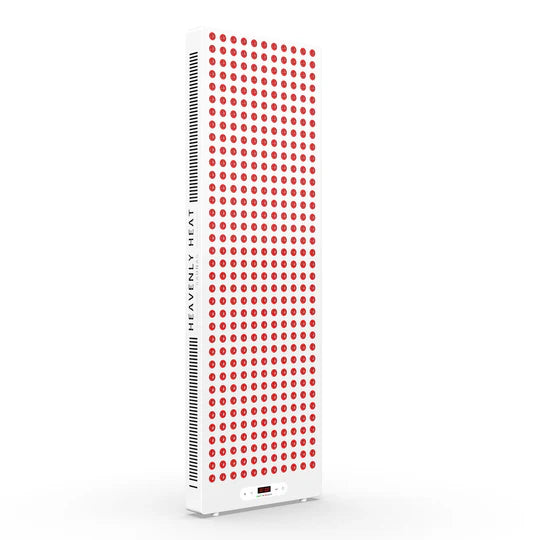Barrel Sauna vs Square Sauna: Key Differences and Which One is Better

Introduction to Barrel and Square Saunas
Barrel and square saunas offer unique designs and experiences, each catering to different preferences.
A barrel sauna has a rounded, cylindrical shape, which helps distribute heat evenly and reduces heating time.
Its curved structure also minimizes unused space, making it efficient and visually appealing.
In contrast, a square sauna features a traditional box-like design, providing more headroom and flexibility for seating arrangements.
Both saunas are typically made from high-quality woods like cedar, spruce, or hemlock, ensuring durability and insulation.
The barrel sauna’s curved design improves air circulation, enhancing the overall sauna experience.
Why Sauna Shape Matters
- Barrel Saunas Heat Up Faster Because of Their Shape: The curved walls in barrel saunas help hot air move naturally, spreading warmth evenly and quickly.
- Rounded Walls Keep Heat Inside Better Than Corners: Barrel saunas don’t have corners where warm air can get stuck, so they hold heat more efficiently.
- Square Saunas Give More Room to Sit and Lie Down: Square saunas offer extra space, making them more comfortable for longer relaxing sessions.
- Steam Moves Freely in Barrel Saunas for Balanced Humidity: The open shape of barrel saunas helps steam circulate evenly, creating a good humidity level.
- Square Saunas Can Hold Moisture in Certain Spots: Moisture may stay trapped in parts of square saunas, which can change how the sauna feels.
Barrel Sauna vs Square Sauna Comparison
Heat Circulation & Efficiency
A barrel sauna’s curved design allows heat to circulate naturally, preventing hot spots and cold corners.
This promotes efficient heat retention, ensuring a cozy and consistent environment.
Square saunas, while effective, may experience uneven heat distribution due to their corners, which can trap warm air.
As a result, barrel saunas generally retain heat better, warming up faster and requiring less energy to maintain temperature.
Heating Speed & Performance
Barrel saunas heat up faster because their compact, curved shape minimizes air space, allowing the heater to warm the area quickly.
This design also makes them more energy-efficient since less power is needed to maintain the desired temperature.
Square saunas, with their larger, more open design, take longer to reach the optimal temperature and may require more energy to keep heat evenly distributed.
Interior Space & Comfort
- Square saunas give you more room to move comfortably: Square saunas offer more space to move around, providing better headroom and flexibility for bench placement.
- You can sit more people in a square sauna with ease: Their straight walls allow for various seating arrangements, making them ideal for group sessions.
- Barrel saunas feel tighter, especially if you're tall: Barrel saunas, with their rounded interiors, may feel a bit cramped, especially for taller individuals or those looking for extra legroom.
- Barrel saunas make up for less space with better heat: While square saunas allow for more customizable seating, barrel saunas compensate with their efficient heat distribution.
Energy Use & Costs
Barrel saunas often come at a lower initial price compared to square saunas. Their efficient design reduces the amount of power needed to maintain temperature, making them more cost-effective in the long run.
Square saunas, while sometimes more expensive upfront, offer more customization options, which could influence the price.
Over time, barrel saunas might provide a better return on investment due to their energy efficiency and durability.
Durability & Weather Protection
- Barrel sauna handles bad weather better: Barrel saunas are more durable in tough climates. Their rounded shape helps them stand strong against strong winds and extreme temperatures.
- Barrel shape keeps water out and problems away: The curved design doesn’t let water sit on the surface. This helps stop moisture buildup, which means less chance of mold and rotting wood.
- Square sauna needs more care in humid places: Square saunas can still last long, but they need more regular cleaning and care, especially if you live somewhere with high humidity.
- Looking after your sauna keeps it strong for years: No matter which sauna you choose, regular maintenance will help it stay in good shape and last longer.
Space & Placement Needs
- Barrel saunas take less space and fit in tight areas: Barrel saunas are more compact and fit well into smaller spaces. Their rounded shape makes them ideal for patios, decks, and small backyards where space is limited.
- Their shape makes them easier to place in tricky spots: Because of their curved design and smaller footprint, barrel saunas can be placed in areas where a square sauna might not fit, giving more flexibility in tight locations.
- Square saunas need more space but give more layout freedom: Square saunas usually require a bit more room to install, but their straight walls allow for better control over the interior layout. You can move benches around and add features like storage or extra seating.
- Barrel saunas have a fixed design due to their curved walls: The unique round shape of barrel saunas looks great, but it limits how much you can change or customize the inside. The curved walls mean less flexibility for rearranging the layout.
Design & Customization
- Square saunas give you more freedom to arrange things your way: Because of their straight walls, square saunas make it easier to move benches, add storage, or change the layout to fit your needs.
- Barrel saunas have a fixed shape but work really well: The curved design of barrel saunas doesn’t allow much layout change, but it helps hold in heat better, making them efficient and cozy.
- Barrel saunas look natural and fit beautifully in outdoor spaces: If style matters to you, barrel saunas offer a unique rustic look that blends nicely with gardens, backyards, or forest settings.
Cost & Affordability
- Barrel saunas usually cost less to buy: When starting out, barrel saunas are generally cheaper than square ones, making them a more affordable choice upfront.
- Barrel saunas help lower your power bills: Their rounded shape keeps heat in better, so they use less energy and cost less to run over time.
- Square saunas can cost more because of extra features: If you want add-ons or custom touches, square saunas give you options, but that flexibility often means paying more.
- Barrel saunas save you money in the long run: Thanks to lower energy use and solid build quality, barrel saunas often end up being more cost-effective over the years.
Airflow & Ventilation
- Barrel saunas let air flow naturally because of their curved shape: Barrel saunas often have better natural airflow due to their curved design, which promotes better circulation of fresh air.
- Better airflow in barrel saunas means heat spreads evenly: This natural airflow in barrel saunas results in more even heat distribution and a more comfortable sauna experience.
- Square saunas can have poor airflow if not vented well: Square saunas can sometimes experience poor airflow, especially if their ventilation system is not properly designed.
- Good ventilation keeps sauna heat steady and comfortable: Good ventilation helps maintain consistent heat, making barrel saunas potentially the better choice if airflow and ventilation are priorities.
Maintenance & Lifespan
- Barrel saunas need less maintenance overall: Both sauna types need upkeep, but barrel saunas usually require less regular work.
- Barrel saunas last longer because of their design: The shape and materials of barrel saunas help them resist damage and last more years.
- Square saunas need more frequent cleaning: Square saunas can build up mold or moisture more easily, so they need more attention.
- Taking care of any sauna helps it last longer: Regular cleaning and care improve the lifespan of both sauna types, though barrels generally hold up better.
Seating & Comfort
- Square Saunas Give You More Seating Options: The straight walls let you arrange benches in many ways, so you can fit more people comfortably.
- Barrel Saunas Have Limited Seating Space: Because of their curved shape, barrel saunas usually have fixed seats that can feel a little tight.
- Barrel Saunas Spread Heat More Evenly: The rounded design helps the warmth feel consistent and cozy all around.
- Square Saunas Are Roomier But Heat May Vary: You get more space to move, but the heat might not be as evenly spread as in a barrel sauna.
- Comfort Depends on How Many People You Have: Choose based on how much room and seating you need for the number of users.
Conclusion: Choosing the Right Sauna for You
Which sauna best suits your needs, efficiency or spacious comfort? Both barrel and square saunas offer unique advantages, making the decision a matter of preference.
If quick heating, energy efficiency, and a cozy atmosphere appeal to you, a barrel sauna is an excellent choice.
Its curved design promotes superior heat circulation and requires less power to maintain warmth.
On the other hand, if you prioritize roomier interiors, customizable seating, and a more traditional feel, a square sauna may better fit your lifestyle.
Whatever your preference, exploring your options will ensure you find the perfect sauna experience. Ready to make your choice? Start comparing models today.


